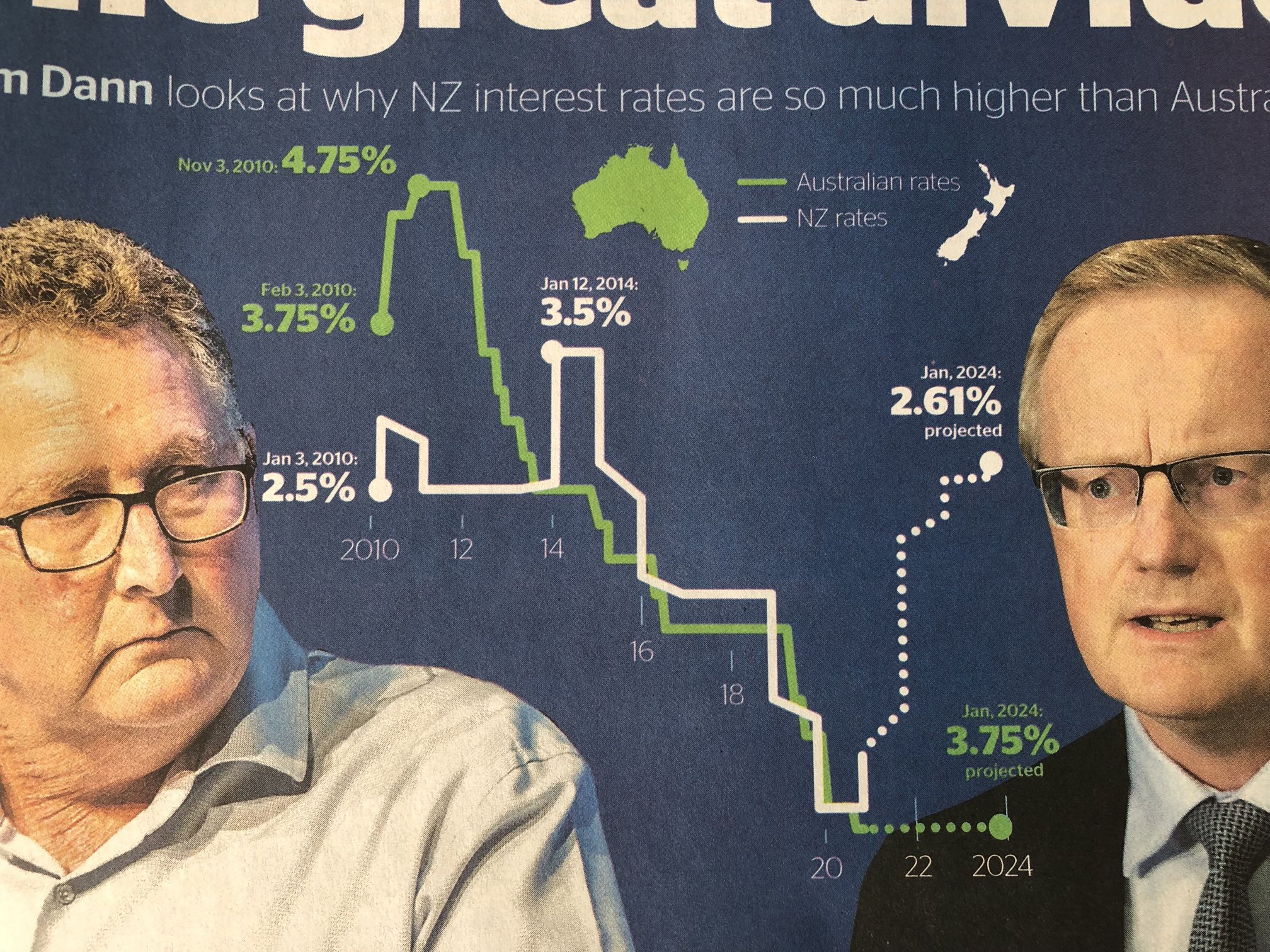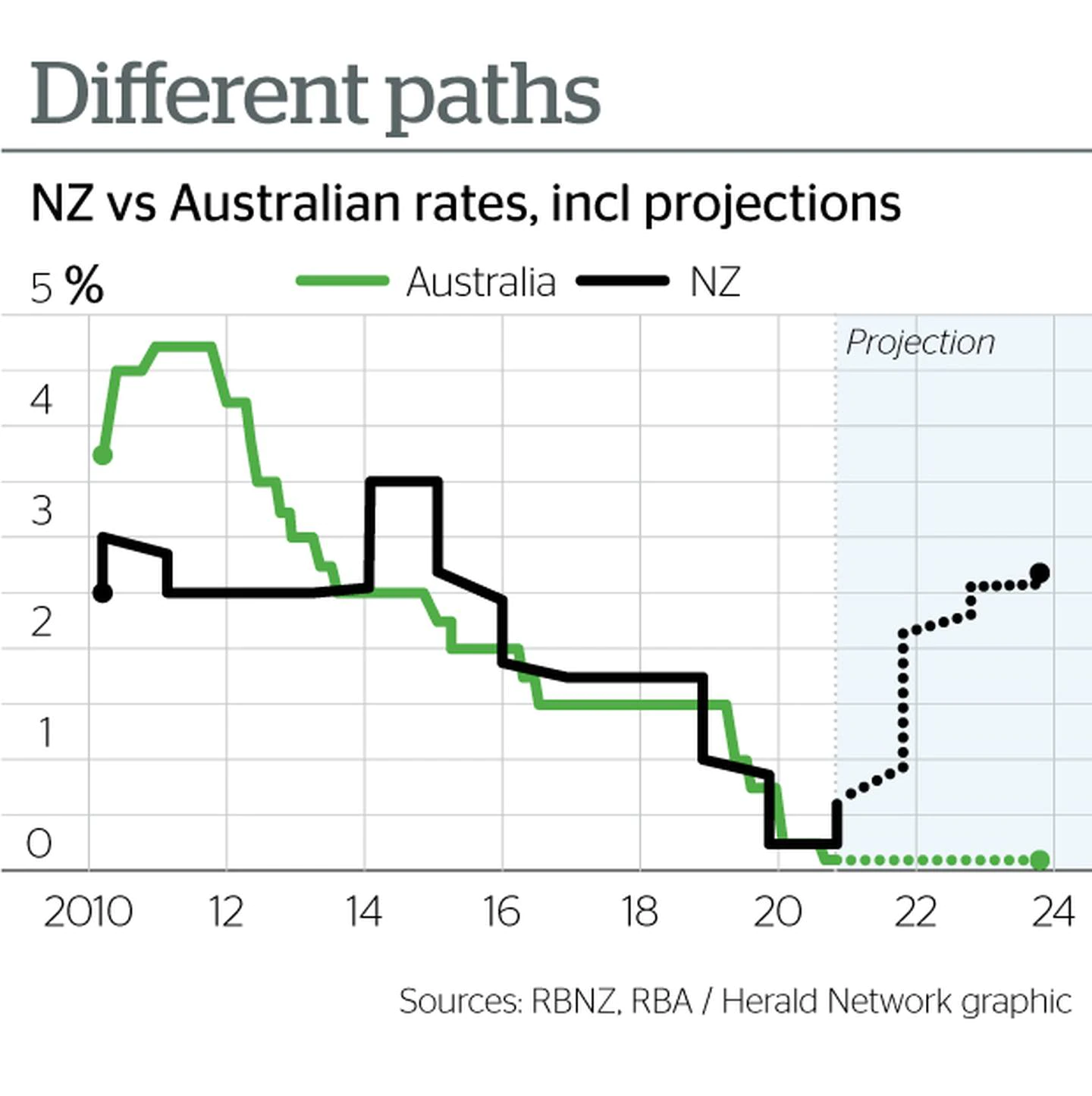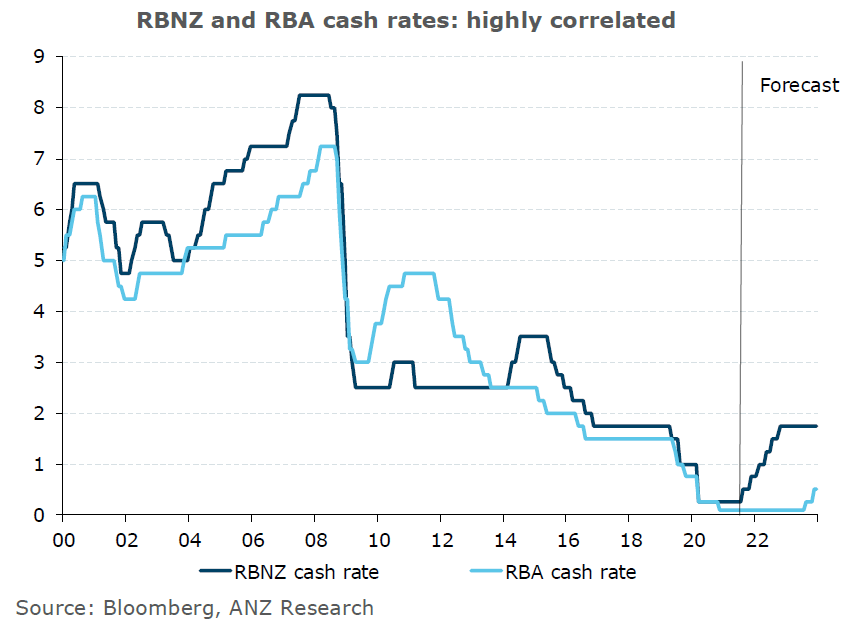Up and down
From the NZ Herald, squashed-trees edition
It’s not really clear what’s going on here: the 3.75% at the bottom right vs the 3.75% at the top left.
Things are better on the NZ$ Herald website, under the headline The great divide: Why are NZ interest rates so much higher than Australia?
Here it’s clear that the label at the bottom right had just gone feral somehow and that the graph is at least plausibly correct. There’s still a bit of a problem in that, at least for the historic part of the graph, the lines should be flat where they don’t jump; there shouldn’t be any slopes. The RBNZ didn’t come out in early 2010 and say “we’re going to smoothly decrease the rate from 3 to 2.75 over the rest of the year”; that’s not how they work. Also, NZ interest rates aren’t actually “so much higher” than rates across the Tasman; they’re just projected to be higher.
Checking against this July graph from interest.co.nz basically confirms the numbers, though there is some interesting disagreement if you care about details, such as the shape of the interest rate rise and fall in 2014-15 and whether the Oz rate was above or below the NZ rate at the start of 2016
The July projections diverge less than the current predictions do: the banks aren’t actually all that good at predicting interest rates two years ahead.
The spurious slopes are still there in the graph, though in this one at least the flat bits are flat and it’s just the vertical bits that aren’t vertical. That’s even a problem on the official RBNZ website.
None of this is a criticism of the actual content of the Herald piece, which both talks about the reasons for divergence and quotes experts who don’t think the diverging forecasts will hold up
Ultimately, despite the two very divergent central bank views, the answer is somewhere in the middle and the rate tracks will move closer in the year ahead, McLeish says.
But the graph and headline don’t help
Thomas Lumley (@tslumley) is Professor of Biostatistics at the University of Auckland. His research interests include semiparametric models, survey sampling, statistical computing, foundations of statistics, and whatever methodological problems his medical collaborators come up with. He also blogs at Biased and Inefficient See all posts by Thomas Lumley »


